Name: Nishimura-tei
Official Website:https://nishimuratei.gorp.jp/

Fushimi Inari Shrine: Recommended Visit Route & Estimated Time
Fushimi Inari Shrine in Kyoto is the head shrine of all Inari shrines in Japan and is globally famous for its Senbon Torii (thousands of vermillion torii gates). The breathtaking sight of countless torii gates forming a tunnel-like pathway is truly mesmerizing.
One of the best things about visiting Fushimi Inari Shrine is that admission is completely free! The shrine is open 24/7, meaning visitors can explore it at any time—whether early in the morning or late at night.
Many travelers who have seen photos of the shrine often wonder:
• Where exactly are the torii gates located?
• What are the best routes for exploring the shrine?
• How much time is needed for a proper visit?
In this guide, we’ll introduce the best sightseeing routes, estimated walking time, and must-see highlights to help you make the most of your visit to Fushimi Inari Shrine.
table of contents
[x] close
Fushimi Inari Shrine: Recommended Visit Route & Estimated Time
- Fushimi Inari Taisha Guide Map (Inariyama Map) – Check the Full Layout
- 1. A Short Pilgrimage Route Through the Thousand Torii Gates: Up to the Okusha Shrine
- 2. Visiting Route to Mitsutsuji: Exploring Shinike & Kumataka Shrine
- 3. Pilgrimage Course to Yotsutsuji: Enjoy Stunning Views of Kyoto!
- 4. Inariyama Summit Course
- ◎ Climb at Your Own Pace and Enjoy the Journey!
Fushimi Inari Taisha Guide Map (Inariyama Map) – Check the Full Layout
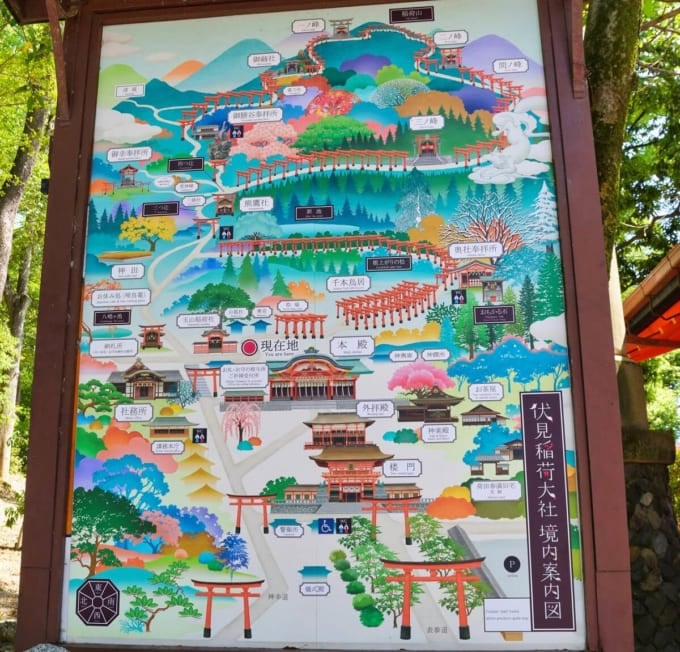
The Fushimi Inari Taisha precinct map (Inariyama Map) provides an overview of the shrine's layout, including the famous Senbon Torii (Thousand Torii Gates) and the route leading to the summit of Mt. Inari.
Start by passing through the Senbon Torii, reaching the Okusha Hohaisho (Inner Shrine) in about 10 minutes. From there, it takes another 10 minutes to the Shinike Pond, located in the central part of the map. Continuing further, it takes approximately 10 more minutes to reach Yotsutsuji, a well-known viewpoint along the trail.
Beyond Yotsutsuji, the path becomes a climb to the summit of Mt. Inari (Ichinomine). While the trail is well-maintained, the elevation gain is significant, and a round trip takes around one hour. Now, let's explore the highlights of each section of the route!
Don't forget to check Google Maps for additional guidance!
https://maps.google.com/maps?ll=34.966042,135.775932&z=14&t=h&hl=ja&gl=JP&mapclient=embed&saddr=%E6%A8%A9%E6%AE%BF%E3%80%81%E3%80%92612-0882%20%E4%BA%AC%E9%83%BD%E5%BA%9C%E4%BA%AC%E9%83%BD%E5%B8%82%E4%BC%8F%E8%A6%8B%E5%8C%BA%E6%B7%B1%E8%8D%89%E8%97%AA%E4%B9%8B%E5%86%85%E7%94%BA%EF%BC%96%EF%BC%98&daddr=%E4%BC%8F%E8%A6%8B%E7%A8%B2%E8%8D%B7%E5%A4%A7%E7%A4%BE%20%E5%A5%A5%E7%A4%BE%E5%A5%89%E6%8B%9D%E6%89%80%E3%80%81%E3%80%92612-0882%20%E4%BA%AC%E9%83%BD%E5%BA%9C%E4%BA%AC%E9%83%BD%E5%B8%82%E4%BC%8F%E8%A6%8B%E5%8C%BA%E7%A8%B2%E8%8D%B7%E5%B1%B1%E5%AE%98%E6%9C%89%E5%9C%B0+to:%E7%86%8A%E9%B7%B9%E7%A4%BE%E3%80%81%E3%80%92612-0805%20%E4%BA%AC%E9%83%BD%E5%BA%9C%E4%BA%AC%E9%83%BD%E5%B8%82%E4%BC%8F%E8%A6%8B%E5%8C%BA%E6%B7%B1%E8%8D%89%E9%96%8B%E5%9C%9F%E5%8F%A3%E7%94%BA+to:%E4%B8%89%E3%83%84%E8%BE%BB%E3%80%81%E3%80%92612-0805%20%E4%BA%AC%E9%83%BD%E5%BA%9C%E4%BA%AC%E9%83%BD%E5%B8%82%E4%BC%8F%E8%A6%8B%E5%8C%BA%E7%A8%B2%E8%8D%B7%E5%B1%B1%E5%AE%98%E6%9C%89%E5%9C%B0%EF%BC%92%EF%BC%91%E4%B8%81%E7%9B%AE+to:%E5%9B%9B%E3%81%A4%E8%BE%BB%E3%80%81%E3%80%92612-0804%20%E4%BA%AC%E9%83%BD%E5%BA%9C%E4%BA%AC%E9%83%BD%E5%B8%82%E4%BC%8F%E8%A6%8B%E5%8C%BA%E7%A8%B2%E8%8D%B7%E5%B1%B1%E5%AE%98%E6%9C%89%E5%9C%B0%EF%BC%91%EF%BC%95+to:%E4%B8%89%E3%83%8E%E5%B3%B0%EF%BC%88%E4%B8%8B%E4%B9%8B%E7%A4%BE%E7%A5%9E%E8%B9%9F%E3%83%BB%E7%99%BD%E8%8F%8A%E5%A4%A7%E7%A5%9E%EF%BC%89%E3%80%81%E3%80%92612-0804%20%E4%BA%AC%E9%83%BD%E5%BA%9C%E4%BA%AC%E9%83%BD%E5%B8%82%E4%BC%8F%E8%A6%8B%E5%8C%BA%E7%A8%B2%E8%8D%B7%E5%B1%B1%E5%AE%98%E6%9C%89%E5%9C%B0%EF%BC%91%EF%BC%92+to:%E7%A8%B2%E8%8D%B7%E5%B1%B1%E3%80%81%E3%80%92612-0804%20%E4%BA%AC%E9%83%BD%E5%BA%9C%E4%BA%AC%E9%83%BD%E5%B8%82%E4%BC%8F%E8%A6%8B%E5%8C%BA%E7%A8%B2%E8%8D%B7%E5%B1%B1%E5%AE%98%E6%9C%89%E5%9C%B0%EF%BC%91%EF%BC%95&dirflg=w
Here is the recommended route to Mt. Inari summit (Ichinomine), passing through key landmarks.
While Google Maps estimates this 1.9 km trail to take 35 minutes, the steep inclines and elevation differences mean that most visitors will need more time to complete the hike. Plan accordingly for a comfortable and enjoyable visit!
1. A Short Pilgrimage Route Through the Thousand Torii Gates: Up to the Okusha Shrine
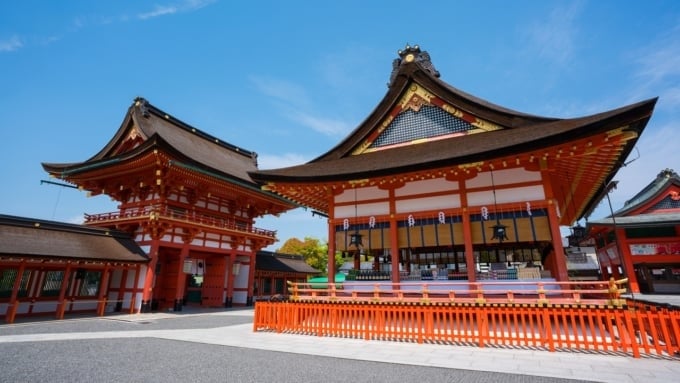
For those who want to experience the Thousand Torii Gates of Fushimi Inari Taisha without spending too much time, the route up to Okusha Shrine (Oku-no-sha Hōhaisho) is highly recommended. After passing through the Tower Gate (Rōmon) and offering prayers at the Main Hall (Gohonsha), head towards the back-left side of the shrine.
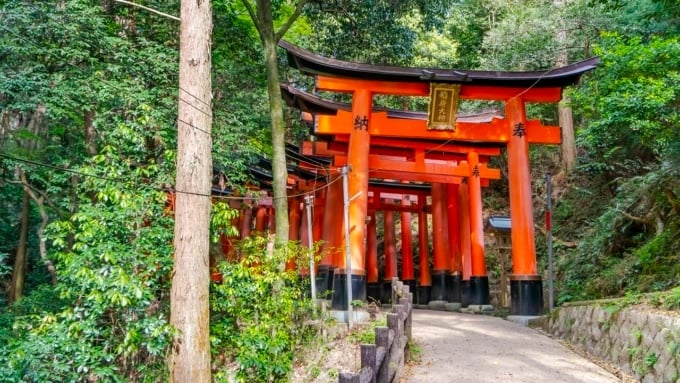
The Thousand Torii Gates (Senbon Torii) refer to the densely packed torii gates that line the path from Okumiya (Inner Shrine) to Okusha Shrine. As you ascend the staircase beyond the torii gates and continue towards the right, the breathtaking Senbon Torii will come into view!
As you step through approximately 70 grand torii gates, you will reach a fork in the path where the trail splits into two. You can choose either path unless specific instructions are given during peak hours. Follow the designated route if crowd control measures are in place.

While some visitors may choose to turn back at this point, the real highlight of the Senbon Torii awaits just ahead. Don't stop now—venture further into this mystical journey!
The vivid vermilion torii gates, standing closely together to form a tunnel-like passage, create an awe-inspiring atmosphere. Walking through this endless corridor of torii gates, you will feel the spiritual and mystical energy of Fushimi Inari Taisha. Take your time to immerse yourself in this sacred experience.
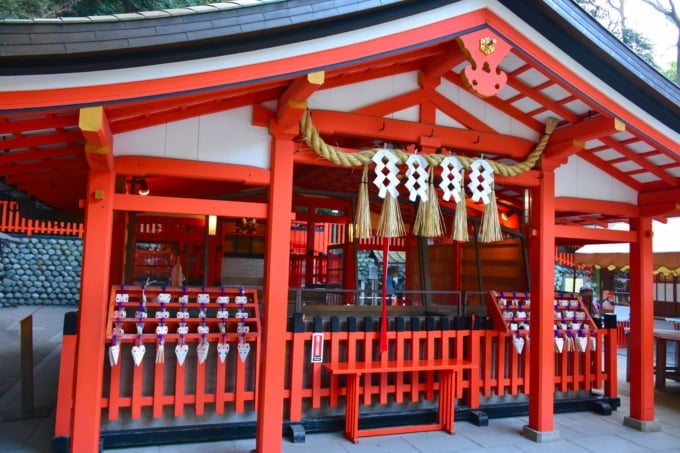
After passing through the Senbon Torii, you will immediately reach the Okusha Shrine (Oku-no-sha Hōhaisho), famous for the Omokaru Stone. This shrine is a popular spiritual spot where visitors test their fortunes by lifting the stone. The entire journey from the main hall to Okusha Shrine takes approximately 15 to 20 minutes round-trip, making it a quick yet fulfilling pilgrimage experience.
2. Visiting Route to Mitsutsuji: Exploring Shinike & Kumataka Shrine
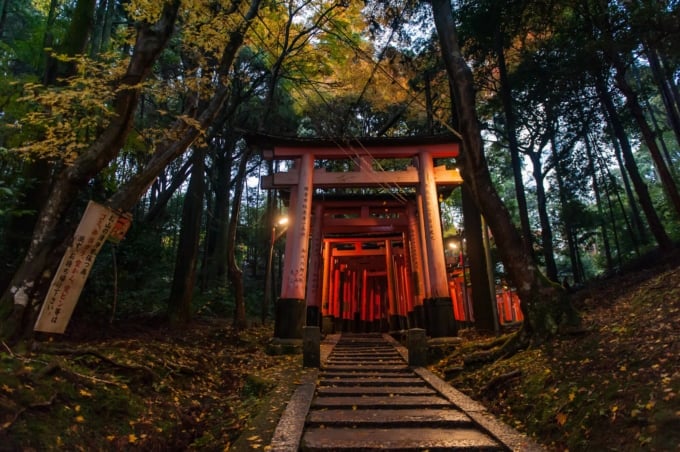
Beyond the iconic Senbon Torii (Thousand Torii Gates) at Fushimi Inari Taisha, the pilgrimage path continues towards Shinike (New Pond) and Kumataka Shrine. Many visitors turn back at the Okusha Hohaisho (Inner Shrine Worship Hall), making this section of the route noticeably less crowded. If you prefer a more serene and immersive experience, venturing further is highly recommended.
Even a short walk beyond the Senbon Torii dramatically changes the atmosphere, offering a refreshing contrast. If you have the energy, take the time to explore this lesser-known part of Fushimi Inari.
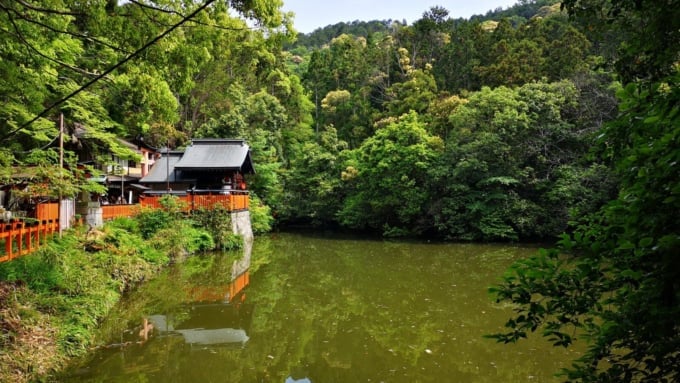
As you continue your ascent, you’ll come across Shinike, a tranquil pond that adds to the mystical ambiance of the area.
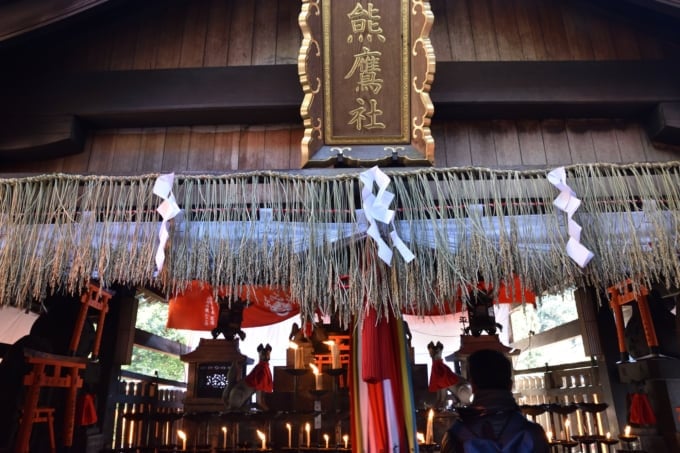
Nestled along the banks of Shinike is Kumataka Shrine, known as a spiritual power spot. Across from the shrine, a small teahouse sells votive candles and other offerings. After paying your respects at Kumataka Shrine, you can take a moment to relax on a nearby bench and enjoy the peaceful surroundings.
While you can retrace your steps back down, a more rewarding return route takes you through Mitsutsuji, allowing you to visit Tamahime Okami (Goddess Tamahime) and Mimamori Fudo Myoo (Guardian Acala), offering a unique and enriching experience.
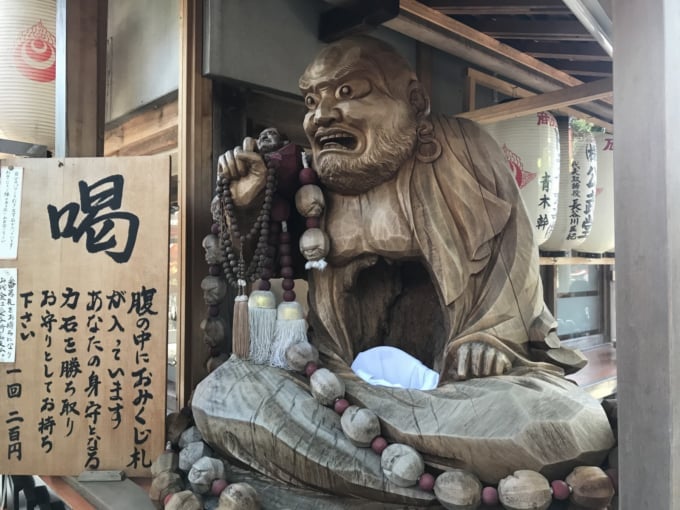
Before concluding your visit, try drawing a "Katsu" Omikuji (Victory Fortune) at Mandarikei Church and receive a Chikaraishi (Power Stone). Then, head back via Yashima-ga-Ike Pond, completing a spiritually fulfilling pilgrimage at Fushimi Inari Taisha.
3. Pilgrimage Course to Yotsutsuji: Enjoy Stunning Views of Kyoto!
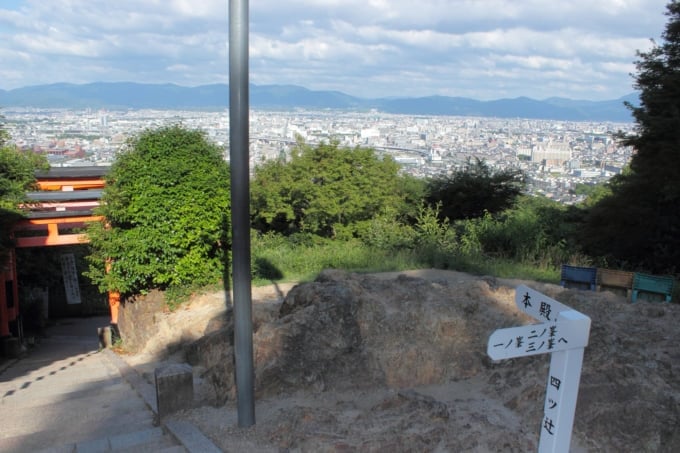
Instead of heading down at Mitsutsuji, why not continue your pilgrimage for another 10 minutes to Yotsutsuji? This scenic spot offers breathtaking panoramic views of Kyoto City. By now, you might have become accustomed to the sight of the iconic vermillion torii gates, but take a deep breath, embrace the natural beauty of Mount Inari, and push forward just a little more!
As you climb the steep stairs and reach the top, the path suddenly opens up, revealing a lively yet narrow space—this is Yotsutsuji.
The highlight of Yotsutsuji is undoubtedly its spectacular cityscape views. As one of the best viewpoints overlooking Kyoto, it’s a rewarding stop on your journey. Sit on the benches or natural rocks, take a well-deserved break, and soak in the magnificent scenery—it’s worth the effort!
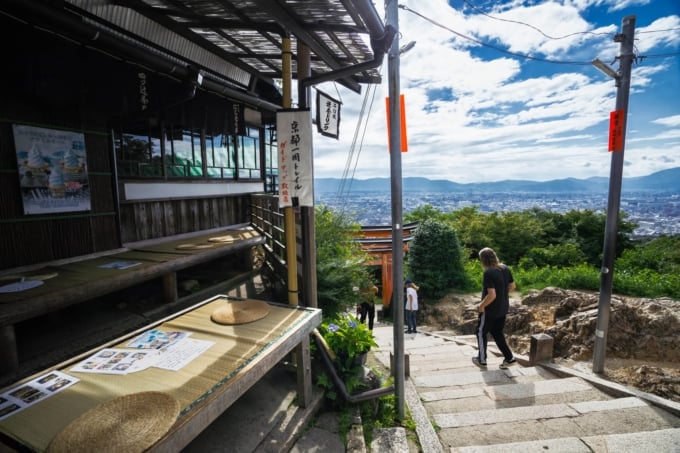
Yotsutsuji features several rest spots, including Nishimura-tei, where you can rehydrate with refreshing drinks after your hike. You can also indulge in delicious Japanese treats like warabi mochi (bracken starch dumplings), soft-serve ice cream, or enjoy a meal with inari sushi and kitsune udon—perfect for recharging your energy.
This pilgrimage route to Yotsutsuji offers an all-in-one experience: marvel at the famous Senbon Torii (Thousand Torii Gates), embrace the sacred mountain's atmosphere, and enjoy the breathtaking views as your ultimate reward. A truly fulfilling and unforgettable journey awaits!
4. Inariyama Summit Course
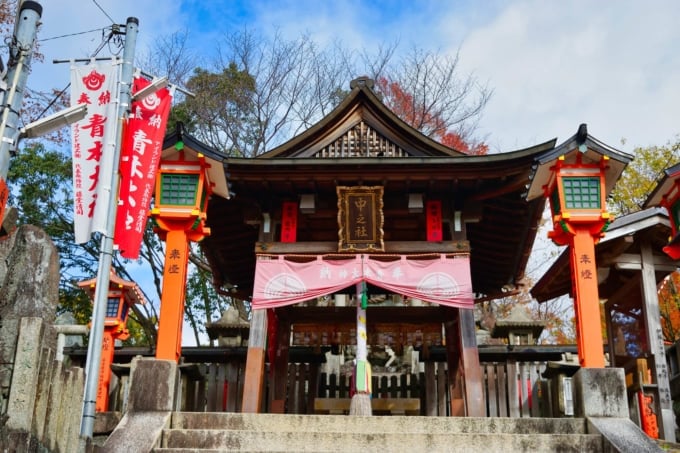
Finally, we introduce the summit course, recommended for experienced hikers.
From Yotsutsuji, the trail to the summit, "Ichinōmine," offers two loop routes: a right course and a left course. The right course is the faster option, following a counterclockwise path through San'nōmine, Aianōmine, and Ninōmine before reaching the summit.
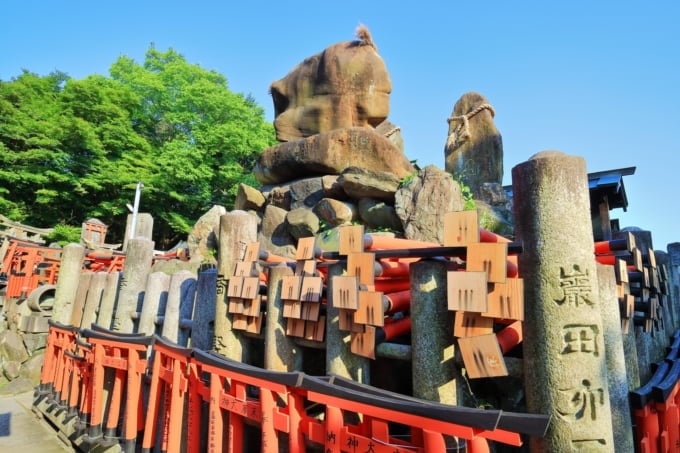
Upon reaching the Ichinōmine shrine at the summit, climbing the final staircase to pay your respects marks the completion of the Fushimi Inari Taisha Oyama Meguri pilgrimage. Congratulations!
For the return trip, we recommend taking the left course for a scenic loop back down. However, if you prefer a quicker descent, you can retrace your steps via the right course.
The total duration depends on your pace and chosen route. Generally: Yotsutsuji to the summit (round trip): Approximately 1 hour and the Main shrine to the summit (round trip): Typically takes over 2 hours
Be sure to allow extra time for worship, rest breaks, and photography to fully enjoy the experience!
◎ Climb at Your Own Pace and Enjoy the Journey!
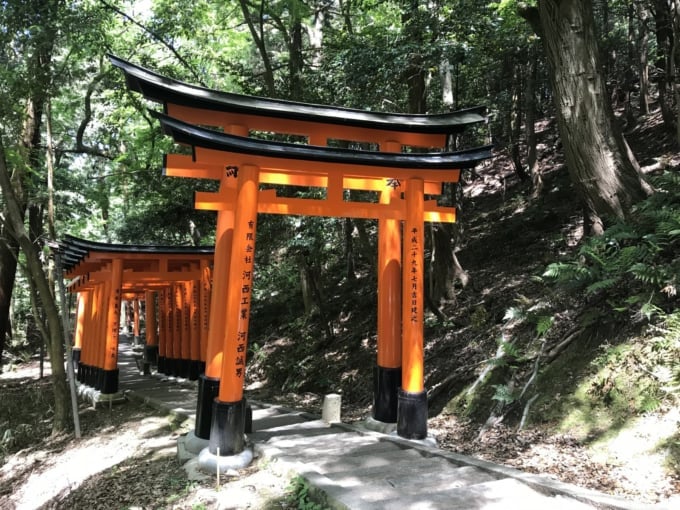
Fushimi Inari Taisha is a must-visit destination in Kyoto, famous for its iconic Senbon Torii (Thousand Torii Gates). While hiking up Mount Inari might seem challenging, there’s no need to push yourself too hard—simply go as far as you feel comfortable, as you can turn back at any point.
Along the trail, you'll find guide maps placed at key locations, providing an approximate sense of distance. Though not perfectly scaled, these maps reassure you that each step brings you closer to the top. With regular breaks, reaching the summit of Mount Inari is more achievable than you might think.
The vast shrine complex is home to multiple worship sites and scenic viewpoints, making the hike a leisurely and rewarding experience. Enjoy the breathtaking views, take your time exploring, indulge in local delicacies, and capture plenty of memorable photos along the way!
RELATED ARTICLES
REGIONS
CATEGORIES
FEATURED ON Kyoto
-

[Kansai] What kind of hotels are ideal for “Hocance”? | Introducing 7 recommended picks
-

Top 10 Stylish Starbucks Stores in Japan – Scenic Views & Beautiful Designs!
-

Nijō Castle (former imperial Villa Nijō Castle) sightseeing | The stage of the Edo Shogunate’s birth and the return of political power
-

【Kyoto】What is Fushimi Inari Taisha? Complete guide to the Senbon Torii and highlights
-
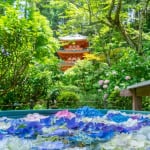
Kizugawa: Once an Imperial Capital – 5 Historical and Nature Spots to Discover
MOST POPULAR ON Kyoto
-
 1
1Doha: Must-see Attractions in the Capital of Qatar
-
 2
2Toronto: 10 Things to do in this Picturesque Canadian City
-
 3
3Amarillo: A City Famous for It’s Amazing Canyons, Great History and Music
-
 4
4South Korea: Dazzling Scenery, Rich Culture and Fascinating History
-
 5
5Kuwait: A Country in Middle East Asia Famous for Hot Sand Dunes and Stunning Cityscape





